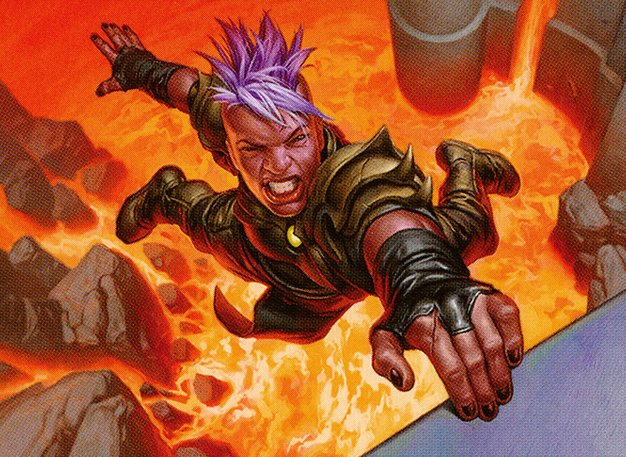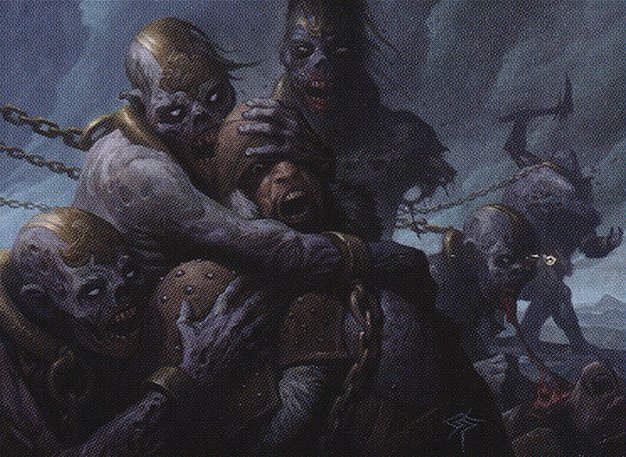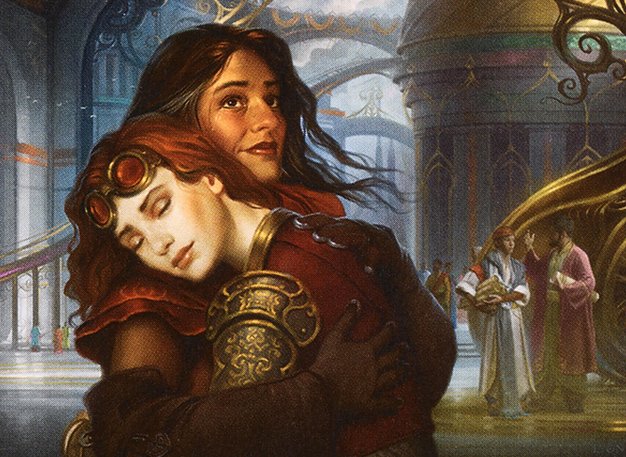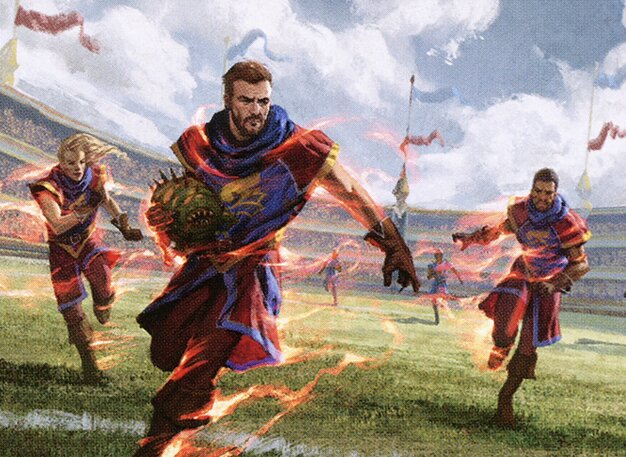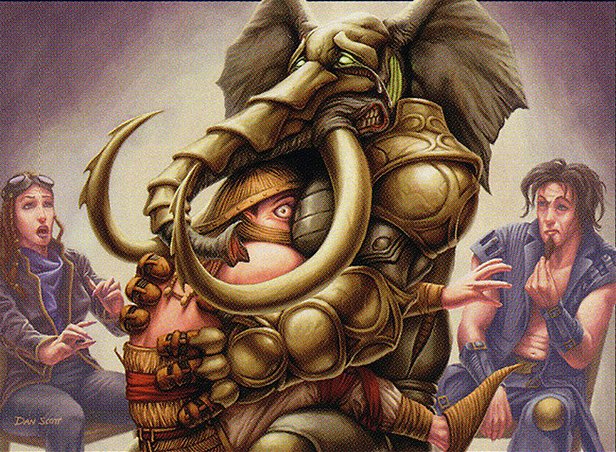Brew like a Game Designer - Give Your Opponents Free Stuff
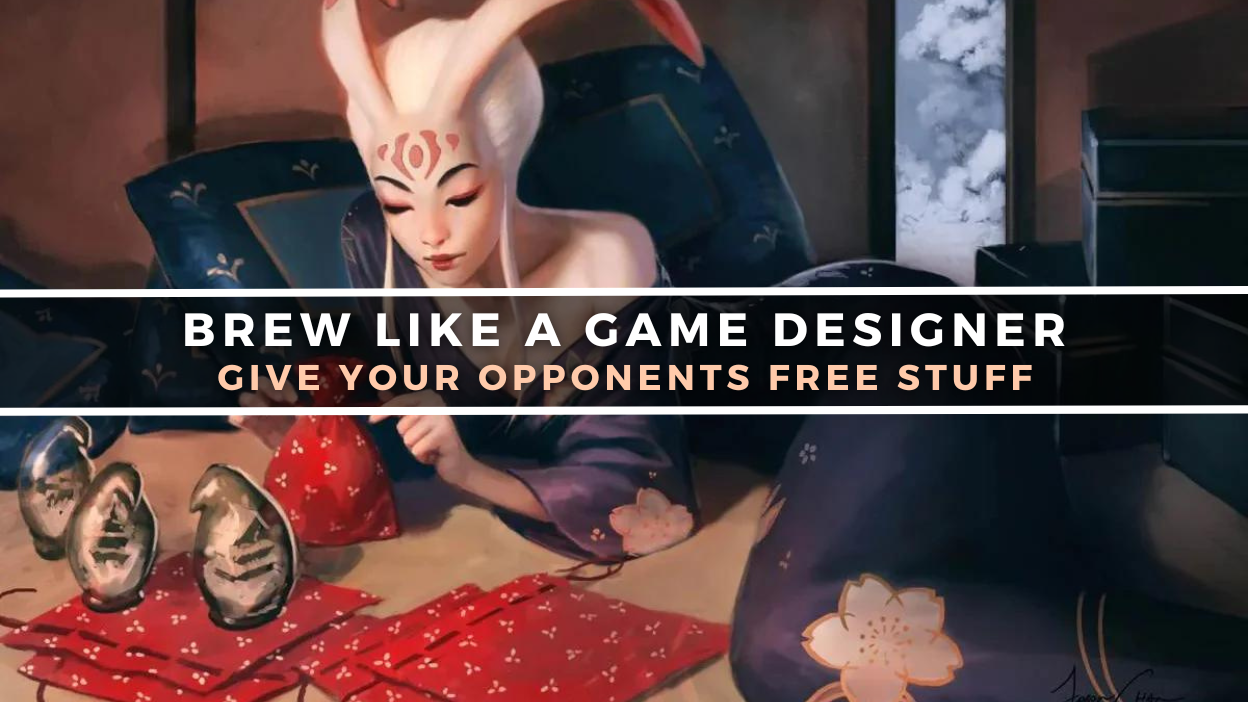
(Gifts Given | Art by Jason Chan)
What Could Go Wrong?
Cheers! Welcome back to Brew like a Game Designer, the series that's all about making your Commander decks more fun to play (and play against). I'm Kieran Sheldon, and my favorite thing is tutoring for another tutor. Today's topics: catch-up mechanics, selective group hug, and balancing a Commander pod by force.
(Powerbalance | Art by Steve Ellis)
First, a Refresher
In my previous article, I laid out a few principles of good Commander games. In particular, I suggested that the most fun and memorable Commander games tend to be:
- Balanced
- Interactive
- Dramatic
- Comprehensible (as in "no one casts Confusion in the Ranks")
I posited that every card you put in your decks incentivizes you and your opponents to play in certain ways, some fun, some unfun. These incentives influence how you play, regardless of whether you notice or not. If your deck contains Armageddon
Today, we're going to be zooming in on the first of the above principles: fun Commander games are relatively balanced, with every player having a chance at victory. We're going to explore how you can build a deck that promotes balanced games, and maybe by the end of the article you'll discover that you're not as opposed to helping your opponents as you thought.
(Stunning Reversal | Art by Zoltan Boros)
We've Got Some Catching Up to Do
In his seminal article Ten Things Every Game Needs, Mark Rosewater, Magic's lead designer, identifies ten characteristics shared by most successful games. One of these characteristics is the presence of a catch-up feature, meaning that players who fall behind should still be able to claw their way to a win.
The most well-known catch-up feature in gaming is probably Mario Kart's infamous blue shell. If you're lucky enough to find this item while zipping around the game's racetracks, you can unleash it to bomb the racer who's currently in first place. Because blue shells are found more often by players who are trailing behind, they provide a opportunity for losing players to make a comeback against winning players.
Magic, of course, incorporates its own catch-up features, in the form of implicit mechanics and cards that give losing players a chance to win.
Magic's Implicit Catch-Up Features
Some of Magic's catch-up features are subtle, bound up in the game's core mechanics where they're difficult to notice.
In a 1-on-1 game of Magic, the randomness of a shuffled deck contributes heavily to a losing player's ability to mount a comeback. Rosewater writes that, as a Magic player, "you always have cards you can draw that are optimal and suboptimal" depending on the state of the game. Because of this variance, losing players always have the opportunity to get lucky and snatch a chance at victory. Sure, your opponent might be ahead on board, but what if they draw several lands in a row? What if you draw your Swords to Plowshares
Commander, however, incorporates another implicit catch-up feature that makes even more of an impact than randomness, and that feature is politics. When a player assumes an early lead, it's very common for the other players to join forces in order to level the playing field. Often, the winner of a Commander game isn't the player who makes the biggest plays, but rather the player who manages to escape notice long enough to survive until the end.
Magic's Optional Catch-Up Features
Our favorite game also incorporates more obvious mechanisms for evening the odds
Many of the most obvious catch-up cards are white, since the color white cares about fairness. Cards like Knight of the White Orchid
However, by far the most common type of catch-up card is the board wipe
Finally, cards that punish opponents for their success can help a losing player stay in the game. From Price of Progress
What If It's Not Enough, Though?
Unfortunately, all of these catch-up features can fall short in some circumstances. Randomness is as likely to favor a winning player as a losing one. Leveraging politics is great at knocking a player out of the lead but terrible at stopping a player from falling behind, and newer players, who are the most likely to find themselves in a losing position, may not know how to incorporate catch-up cards into their decks.
I'm happy to tell you that there is another way. Through careful deckbuilding (and the abandonment of some pride), we can ensure that the games we play are balanced and fun, at least most of the time.
Let's talk about group hug.
(Sibsig Host | Art by Steve Prescott)
Bring It In, Team
In Magic parlance, "group hug" refers to effects that give resources to your opponents. These cards have been a part of Magic since its very first
These cards aren't everyone's cup of tea, and I can understand why. Our goal in a game of Magic is to win, so it feels counterintuitive to give free resources to our opponents, which theoretically reduces our chance of winning the game. Additionally, cards like Mana Flare and Howling Mine can contribute to weird, fast games that sometimes don't feel much like playing Magic at all.
These cards also aren't great for balancing a game. Sure, they can ensure that every player gets to cast their cards, but players with more experience and better decks are likely the most able to capitalize on free resources. In many cases, these cards amplify balance issues rather than smooth them.
However, these aren't the only group hug cards available.
(Cathartic Reunion | Art by Howard Lyon)
Selective Group Hug
All the previously mentioned cards represent universal group hug effects, meaning that they benefit every player equally. However, there's a second category of group hug cards that's far more useful for balancing a game of Commander. Selective group hug effects only benefit a chosen opponent, and, in my humble opinion, these effects are far more fun to play.
Consider, for instance, the difference between the universal Cut a Deal and the selective Secret Rendezvous. In a four-player pod, both draw you three cards while also drawing your opponents three total cards. However, I'd argue that the selective group hug effect is a far more fun and powerful choice, for several reasons:
Selective Group Hug Evens the Odds
Selective group hug effects contribute to a balanced game. After all, if you've got a Secret Rendezvous in hand, are you going to give free cards to the opponent in the lead or the inexperienced opponent who's been mana-screwed for the last three turns? These selective effects incentivize helping the player who's fallen behind, so they inherently balance Commander games in ways that cards like Cut a Deal cannot.
Selective Group Hug is Politically Powerful
Remember how I said that one of Commander's primary balancing factors is its multiplayer nature? Selective group hug effects amplify this feature of the game. The more you've teamed up with another player to take down an archenemy, the more powerful these cards become.
Yes, if you're in a 1-on-1 battle with an opponent, Secret Rendezvous is pretty bad. But if you and Patricia have teamed up to take down George, Secret Rendezvous represents a whopping six cards drawn by your "team." If you're digging for a board wipe or removal spell to stop George's machinations, the additional cards that Patricia draws could make all the difference.
Additionally, selective group hug cards can be advantageous outside of scenarios where George becomes the archenemy. The average Commander player would do a whole lot for three free cards. It's often trivial to barter for political favors in exchange for your generous donations. Whether it's immunity from attacks, a removal spell pointed in the direction of your choice, or protection from a troublesome permanent, you'd be shocked what three cards can buy if you're willing to cut a deal.
In contrast, you can't actually cut a deal with Cut a Deal.
Selective Group Hug Diverts Attention
Cards that give resources to specific opponents have a more subtle political benefit, too: they direct opponents' attention away from you. By elevating struggling players, these cards split your opponents' attention.
Suppose you're playing a four-player game, and one player is clearly struggling. In this scenario, each of your other opponents would be directing half of their interaction and attackers towards you, since the struggling player is obviously not a threat. However, if you're able to help that struggling player catch up with Secret Rendezvous, suddenly your opponents' attention is split three ways instead of two. Attacks are diverted away from you towards the formerly struggling player, and removal spells that might otherwise have removed your permanents remove theirs instead.
Taken as a whole, these political implications mean that selective group hug effects can be actively advantageous for you. Cut a Deal will only ever be a three-mana "draw three" with downside, but Secret Rendezvous is sometimes a three-mana "draw three" with upside, which is a very good card.
Selective Group Hug is Fun and Skill-Testing
I know some players are still bristling at the thought of helping your opponents. Why would you want to give your opponents resources?
Even if you ignore all of the political advantages discussed above, selective group hug effects play very differently from universal group hug effects. Universal group hug cards, like Mana Flare and Howling Mine, are kinda chaotic. These cards can feel like they remove strategic depth from the game by shortcutting the resource accrual stage and handing someone an unearned victory.
Selective group hug, in contrast, is usually used as a downside to balance powerful cards. Secret Rendezvous would be quite strong for white if it didn't give cards to your opponents. However, if you're able to circumvent this card's downside, either by strategically choosing which opponent it benefits or by exchanging cards for favors, you can get three cards for a cheap price. Another selective group hug card, Wishclaw Talisman, is played frequently in highly competitive Commander pods because players have discovered ways to work around its downside.
When viewed in this light, selective group hug effects are not very different from cards like Ad Nauseam or Mana Vault: incredibly powerful effects with downsides that demand careful strategy and deckbuilding. If you're interested in making creative gameplay choices to maximize the impact of powerful cards with drawbacks, give selective group hug a try.
Selecting Your Selective Group Hug
Here's a secret: there are a lot more selective group hug cards than you think there are.
As of writing, a Scryfall search for selective group hug cards will produce 143 results, including excellent cards like:
- Baleful Mastery
- Dawn's Truce
- Forbidden Orchard
- Humble Defector
- Incarnation Technique
- Loran of the Third Path
- Peerless Recycling
- Scheming Symmetry
- Shadrix Silverquill
- Skullwinder
- Wishclaw Talisman
Many of these cards have close relatives (the technique spells, the mastery spells, all the new Gift cards from Bloomburrow) that are also worth consideration in a deck built with the philosophy of promoting a balanced game.
However, I'd argue that Scryfall's definition of a selective group hug card is a little uninspired. Here's some cards you may have played without even realizing that they've got a selective group hug function:
- Path to Exile, Boseiju, Who Endures, An Offer You Can't Refuse, Demolition Field, and Assassin's Trophy can fix a mana-screwed player's colors in a pinch.
- Tragic Arrogance and similar cards can spare a struggling opponent's best permanents.
- Windfall and Wheel of Fortune perfectly balance a whole pod's hand sizes.
- Exchange effects, like Shifting Grift, can hand an archenemy's best permanents to a less powerful opponent. Axis of Mortality can do the same with their life total.
- Forgotten Ancient can put counters on opponents' stuff. So can any card that proliferates.
- On that note, a hot take: Generous Patron is better than Mulldrifter.
- Bramble Sovereign can give opponents copies of their creatures.
- Shadow Rift can make an opponent's creature unblockable, representing a huge amount of damage from a one-mana cantrip.
- Kiora's Follower can give opponents a little mana boost, much like Victory Chimes or Spectral Searchlight.
By incorporating these cards into your favorite deck, you're not giving up any utility. The cards mentioned above are all powerful cards in Commander, but they also give you the option of nudging the balance of a game or making some political deals if you feel it's necessary.
The Role of Removal
Selective group hug can help opponents who fall behind because of bad luck, strategic mistakes, poor deckbuilding, or inexperience. However, sometimes an opponent falls behind because someone resolved a Blood Moon.
Because of this, it's critical that you have the ability to remove threatening permanents "for the good of the table." If you're trying to promote a balanced game, make sure you pack your targeted removal. Some targeted removal, like Baleful Mastery, Path to Exile, Make an Example, and Excavation Technique, can double as selective group hug! (Comment below if you can figure out how Make an Example fits into this category, and you'll earn five priceless Brewer Points™.)
(Surge to Victory | Art by Grzegorz Rutkowski)
We're Still Trying To Win, Though
One final disclaimer: the goal of playing selective group hug cards is not to hand an opponent a victory. We want to play a balanced game, and then we want to win it. It takes political acumen and skillful threat assessment to win a game of Commander with a deck full of selective group hug effects, but doing so is an incredibly rewarding experience. Victory tastes so much sweeter when you know each of your opponents had a chance to stop you and failed.
The beautiful thing about many selective group hug cards is that they don't require you to pull any punches during a game. If you draw Secret Rendezvous or Baleful Mastery or Loran of the Third Path, it's usually right to cast it and let your least threatening opponent draw cards. By doing so, you're not giving up percentage points; you're making the correct strategic decision. Playing these cards is in keeping with a core philosophy of this series, outlined in my first article: we make bold decisions during deckbuilding so that we can try our best to win games while still maximizing fun.
Your Myrsterious Benefactor
Was this whole article just an excuse to show off one of my favorite decks? Maybe!
I call this deck Myrsterious Benefactor. It's a political blink deck full of selective group hug and removal, explicitly designed to promote balanced games. It also has a Myr theme, because that makes me happy.
Myrsterious Benefactor
View on ArchidektCommander (1)
Creature (25)
- 1 Astral Dragon
- 1 Atris, Oracle of Half-Truths
- 1 Boggart Trawler // Boggart Bog
- 1 Coveted Falcon
- 1 Djinn of Infinite Deceits
- 1 Flumph
- 1 Glasspool Mimic // Glasspool Shore
- 1 Gold Myr
- 1 Halo Forager
- 1 Keen Duelist
- 1 Leaden Myr
- 1 Loran of the Third Path
- 1 Marvo, Deep Operative
- 1 Myr Battlesphere
- 1 Myr Kinsmith
- 1 Palladium Myr
- 1 Plague Myr
- 1 Silver Myr
- 1 Silverquill Lecturer
- 1 Sokrates, Athenian Teacher
- 1 Tribute Mage
- 1 Wall of Omens
- 1 Wall of Shards
- 1 Witch Enchanter // Witch-Blessed Meadow
- 1 Yes Man, Personal Securitron
Planeswalker (3)
Artifact (7)
Instant (10)
Sorcery (7)
Land (35)
- 1 Adarkar Wastes
- 1 Azorius Chancery
- 1 Bojuka Bog
- 1 Brightclimb Pathway // Grimclimb Pathway
- 1 Clearwater Pathway // Murkwater Pathway
- 1 Command Tower
- 1 Demolition Field
- 1 Deserted Beach
- 1 Dimir Aqueduct
- 1 Exotic Orchard
- 1 Flooded Strand
- 1 Forbidden Orchard
- 1 Glacial Fortress
- 1 Hengegate Pathway // Mistgate Pathway
- 4 Island
- 1 Morphic Pool
- 1 Myriad Landscape
- 1 Orzhov Basilica
- 1 Pit of Offerings
- 3 Plains
- 1 Polluted Delta
- 1 Prismatic Vista
- 1 Raffine's Tower
- 1 Rainbow Vale
- 1 Rogue's Passage
- 1 Shattered Sanctum
- 1 Shipwreck Marsh
- 2 Swamp
- 1 Underground River
There's a more detailed write-up of how the deck works on its Archidekt page, but in summary: the deck draws a ton of cards while allowing chosen opponents to do the same. It also donates its permanents to struggling opponents, relying on Aminatou's ability to blink permanents you own back to your control and thereby rescind gifts when they become disadvantageous. It's weird and fun to play and it frequently wins games.
(Bosom Buddy | Art by Dan Murayama Scott)
Hugging You All Goodbye
...that art's really something, huh?
I expect this to be a bit of a controversial article, so I'm very excited to hear what y'all think. Is there room for more selective group hug effects in your Commander pod? Are you going to incorporate any of the cards I mentioned into your decks? Or do you expect each player in your pods to look out for Number One above all else? Let me know!
Until next time, remember that even Abyssal Persecutor is a group hug card if you squint.

